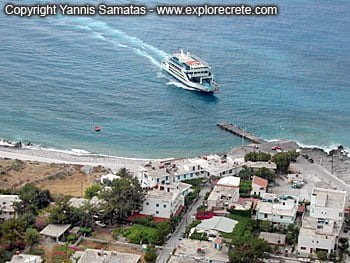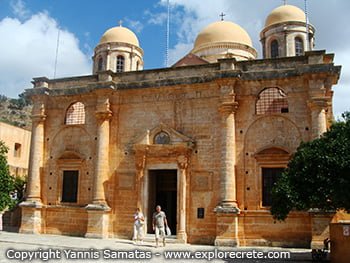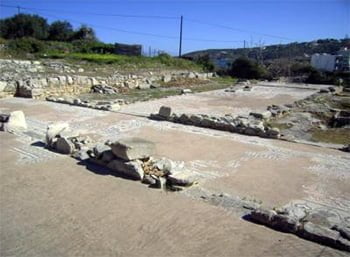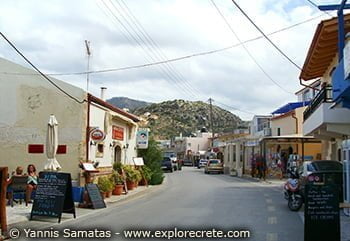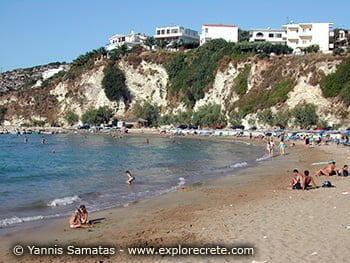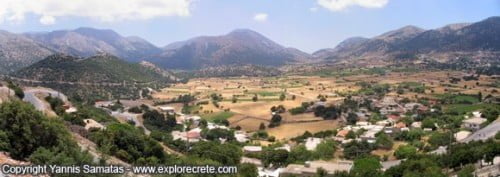Agios Nikitas and Agios Astratigos at Frangokastello
As mentioned above, Frangokastello and the southwest coast of Crete in general flourished during the first Byzantine period, from the 4th to the 6th century AD. In the second half of the 6th century, in Early Christian times (the first centuries of the spread of Christianity after the imposition of religious freedom), two majestic churches in the basilica style of architecture were constructed in the area.
The basilica is a simple rectangular structure with a triangular wooden roof, divided by interior colonnades into aisles running east-west.
The excavators suggest that there may have been a third, as yet undiscovered church in the Frangokastello area.
After the Arab conquest of Crete, the religious centres gradually fell into ruin. Activity in the region was renewed under the Venetians in the 13th and 14 centuries, when smaller, less impressive Orthodox churches were built on the site of the high altars of the ruined basilicas.
Early Christian Basilica of Agios Nikitas (St Nicetas)
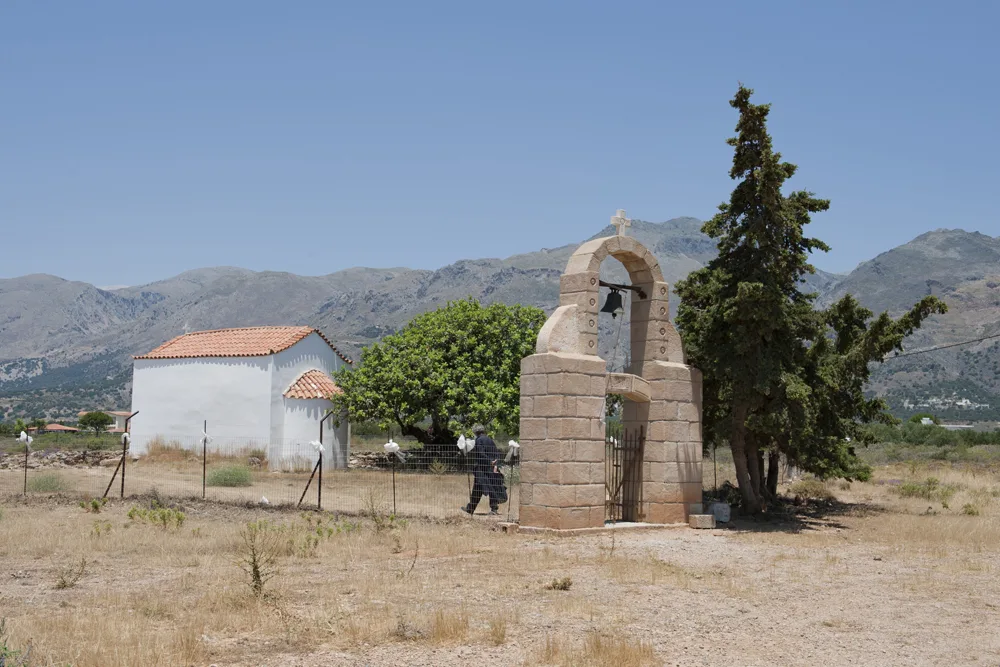
The basilica of Agios Nikitas is 300 metres northeast of the fortress of Frangokastello and was built in the second half of the 6th century AD. It is an impressive 26 metres long, with a mosaic floor decorated with geometrical patterns and depictions of animals, mostly still preserved today. The floor is not in the customary style of Cretan mosaics.
The basilica was abandoned when the Arab raids began. Many centuries later, during the Venetian period, materials from its ruins were used in the construction of the castle.
In the 13th century, a small church dedicated to St Nikitas was built on the ruins of the high altar. This is a small, simple building decorated with wall paintings and constructed from the mosaic flooring and other materials from the ruined basilica.
Generally speaking, the period of Venetian rule was when many simple Orthodox churches were built in spite of Venetian Catholic pressure.
A tale about Saint Nikitas
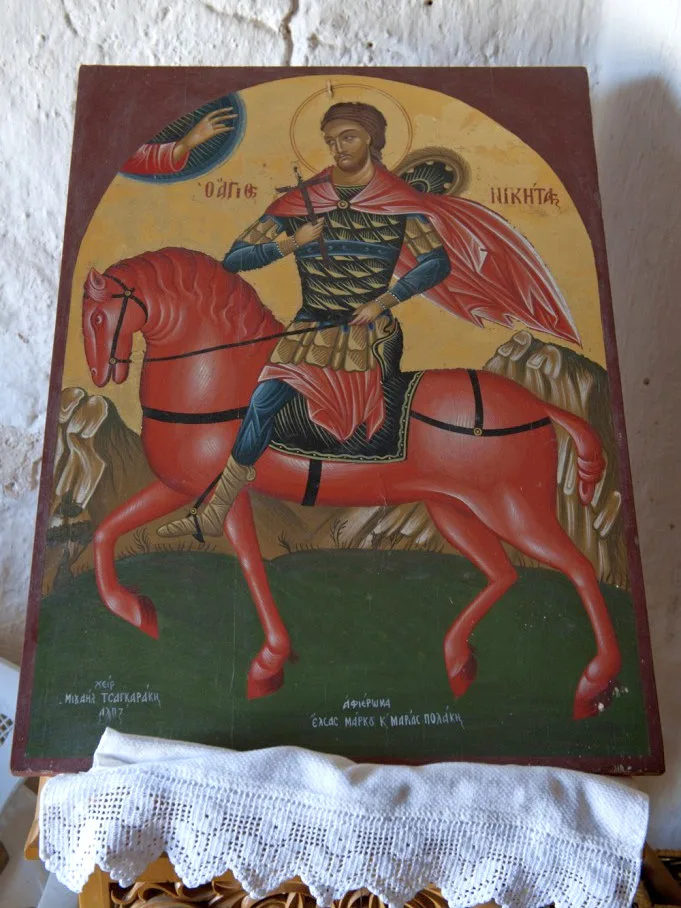
The Cretans have told this tale of St Nikitas from olden times to the present day:
Once upon a time, there was a wedding at Frangokastello. As soon as it was over, the bride took the tablecloths away to wash them in a spring between two rocks. As she was washing them, a ship suddenly appeared offshore. The Franks on board saw the beautiful maiden and decided to carry her off as a gift to their king. They kidnapped her at night and no-one saw them.
They took the girl to the king’s palace. One day the king saw her crying and asked her what was wrong. She sighed and said, “Tomorrow is the feast of St Nikitas and there is a great festival in Frangokastello, my home.”
The king laughed ironically and told her, “If the Cross has grace and Nikitas might, it’s home you will go this very same night.”
The next day at Frangokastello, the priest went to the church to say mass because it was the dawn of the feast of St Nikitas. When he unlocked the church door he saw a girl inside and was frightened. He lit a candle and approached her, and saw the girl whose wedding he had officiated at a year earlier. He asked her, “What are you doing here, my child?”
The girl told him the whole story. The legend says that St Nikitas himself brought her back on his horse. There has always been a great festival at the church of St Nikitas at Frangokastello ever since.
Early Christian Basilica of Agios “Astratigos”
The basilica of Agios Astratigos is 1.5 km northwest of the fortress of Frangokastello. It too was built in the second half of the 6th century. Sinclair Hood, the archaeologist who discovered it, described it as the religious centre of an extensive and thriving settlement.
In the 14th century a church dedicated to the Archangel Michael was built on the site of the high altar. The inhabitants of Sfakia call the Archangel “Astratigos”, from the Greek “Archistratigos”, meaning “commander in chief”, i.e. leader of the Heavenly Host. This unusual name led Hood to believe that the church was dedicated to St Eustratios.
Many marble elements from the basilica were used in the construction of the church. The walls are composed of undressed stone, broken tiles and a thick layer of plaster. The trowel marks visible as lines scored in the plaster on the outer walls are typical decorative features.
Today only a few ruins remain of the church of Agios Astratigos.
© explorecrete.com All Rights Reserved. Reproduction or copying without permission is prohibited.

